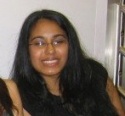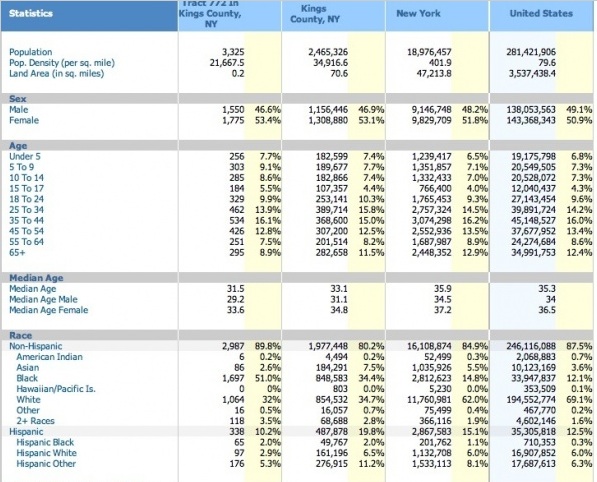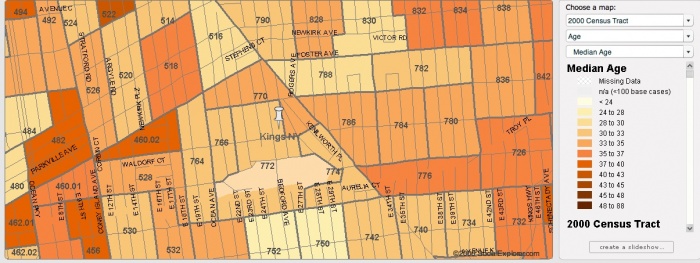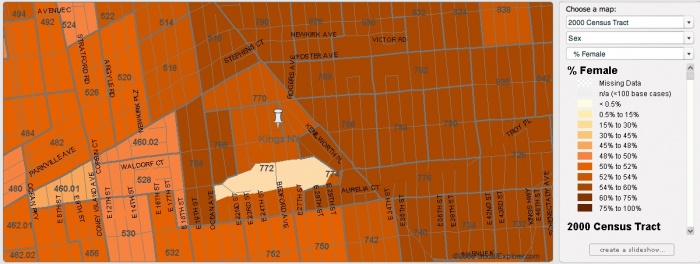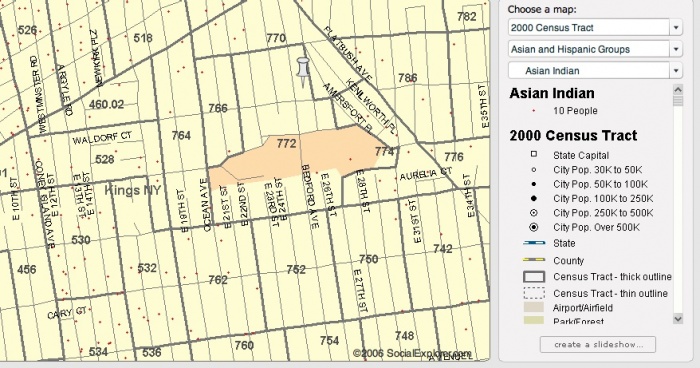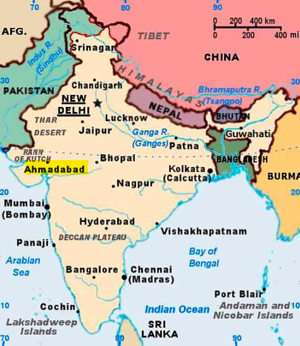User:AdesaiFrom The Peopling of New York City
BiographyHi, I'm Ankuri Desai, a freshman at Brooklyn College in the Macaulay Honors College and the BA/MD program. I graduated from Ward Melville High School out on Long Island. I plan to study Psychology here at BC and possibly minor in Biology. I have been involved in much research and volunteer activities previously, and plan to continue these activities while at Brooklyn College. I was born in Bethpage, Long Island, as the first member of my family to be born in the United States, with most others being born in India. Although we live in the United States, my parents ensure that my siblings (older sister, younger brother) and I are in touch with our ethnic culture. We are devoutly Hindu and are all religiously vegetarians. In my free time, I like to run, read, and have fun! Class WorkIdeal CommunityI believe that an ideal community has many different aspects, including a diverse population, access to information and goods, and the availability of education as well as religious services. The existence of heterogeneity of race in a community’s population is important because it provides exposure to a variety of beliefs and ideas. This is essential for the people of this community because if they leave their neighborhood for another, they are more able to coexist with other peoples. Additionally, the existence of a variety of thought is positive when dealing with business, economy, and other affairs as it supplies new ideas. However when a diversity of races live within a neighborhood, antagonism may arise, as this is an ideal community, the peoples of this neighborhood have all learned to peacefully coexist and even intermingle. In addition to ethnic diversity, an ideal community must have access to information and goods, meaning the existence of newspapers and stores. There needs to be a variety of newspapers and stores available for the people of this diverse community so all are able to find what they need. A library also needs to be located within the community or nearby, so people can obtain valuable information and resources if necessary. The community must also have a school that the children of the neighborhood may attend. Places of worship for the different religions followed in the community must also be present, so the people would be able to practice their beliefs freely. The people of the community must respect each other’s beliefs, creating no ethnic or racial tension, so the community may be successful. Movie Clip-Gangs of New YorkMy one-minute clip from Gangs of New York depicts immigration to New York City during the Civil War era. It shows how there was a massive influx of Irish immigrants to the city and the cold welcome that they receive. Native New Yorkers are hostile towards the Irish immigrants, and it’s shown that all immigrants in general are disliked by native New Yorkers. Seemingly, a sign of an accent brands a person as an immigrant, even if he is only a migrant. I chose this because it depicts well how many immigrants were not felt welcome when arriving in New York City and how nativism was an issue.
Researching NeighborhoodStatistics for Tract 772 in Kings County -from Social Explorer Looking at the census tract information, I am able to learn that my neighborhood (tract 772 in Brooklyn, part of Midwood) has more young people than New York as a whole, as well as the United States. The median age of the population in my neighborhood is about four years less than that of New York and the United States. It is two years less than the median age for Brooklyn residents. Additionally, my neighborhood and Brooklyn in general, has a higher female population as compared to New York and the United States. A little over half of the residents in my neighborhood are classified as Black, which is a much higher percentage than both Brooklyn and the rest of New York. The races that make up the majority of my neighborhood's population are Black, White, and Hispanic. The Asian population is just 2.6%. The native born population is a little higher than the foreign born population. The native born population, to which I belong, is six percent less than the percentage of native born residents throughout Brooklyn. Hence, my neighborhood has more immigrants than Brooklyn taken as a whole. The median household income of my neighborhood is higher than that of the average in Brooklyn, New York, and the United States. The population density of my neighborhood is much less than that of the population density of Brooklyn. There to HereThe India-America Shuffle (There and Almost Here): My parents ultimately immigrated from India (Ahmedabad/Dabhoi,Gujarat) to Elizabeth, NJ in 1985. However, my mother had already visited the United States before immigrating in January 1983, when she had come to visit her older sister, my aunt, in Elizabeth, NJ. She went back to India in July 1983 and married my father in October of that year. Afterward, my mother returned to the U.S. in November 1983 in order to make money and begin building our family's life in America. She worked in a toy factory, but then was involved in a car accident in February of 1984. She had no insurance and had to go to physical therapy, which was very troublesome, as it was expensive, and also because it was difficult to get to the doctor's office and to understand people, as she did not speak English that well yet. Since life was becoming very difficult in the United States, my father encouraged my mother to return to India. Since my mother did not have enough money, her brother, my uncle, lent her the money for her plane ticket. In March 1984, my mother was back in India, living in Dabhoi, India with my father's family, as is custom. My father received has visa soon, but had it extended due to the birth of my sister. For the birth of my sister, my mother went to her mother's home in Ahmedabad, as it is tradition for the first born in a family to be born at (in more modern times, a hospital near) the maternal grandmother's home. When my older sister was one month old, she, my mother, and my father immigrated to the United States. They lived with my aunt and uncle in Elizabeth, NJ, where my father worked as a technician at a pharmaceutical company, since his chemical engineering degree from India did not directly transfer. While my father worked, my mother raised my older sister and made suspenders to sell in her free time. However, my paternal grandfather was worried about my father, which led my father to call India every weekend for an hour, which became expensive. It ended up costing $5,000 for the year, which was seen as very expensive in 1985. My paternal grandmother fell ill in 1986, so my mother, father, and sister all went back to India. They stayed there for almost a year, until my grandmother was well. My family returned to the United States in 1987. Ahmedabad, Gujarat, India Elizabeth, NJ  While in the Untied States, my parents lived with my aunt and uncle (mother's sister and husband) in their apartment in Elizabeth. Both of my parents worked factory-associated jobs, as Elizabeth is an industrial area. Industrial Elizabeth Life on Long Island and then to Brooklyn (Here): My father then took a test for his degree equivalency and got a job as a chemical engineer in Stony Brook, Long Island. My parents and my sister then moved to Coram, Long Island in 1988, so my father could be closer to his job. Afterward, I was born in 1989. My mother got job in 1992 at Stony Brook University Hospital. Subsequently, so as my parents could be closer to their jobs, and also so my sister and I could be assigned to a better school district, we moved to Stony Brook in October of 1994. My family and I have resided in Stony Brook since then. As a member of the Three Village School District, I attended William Sydney Mount Elementary School (where my brother is now in 5th grade), R.C. Murphy Junior High School, which are both located in Stony Brook, and Ward Melville High School, which is located in nearby East Setauket. However, in order to pursue post-secondary education, I moved to the Midwood section of Brooklyn in 2007. Compared to Stony Brook, Brooklyn is a bit more diverse. However, the diversity seen as much different. In Stony Brook, there is a large Protestant, Caucasian population, with significant populations of Jewish and Asian peoples. On the other hand, in Brooklyn, there is a large Orthodox Jewish population near my residence, as well as a large West Indian population. Midterm ExamBerger - 'Describe how specific neighborhoods have shifted populations over time. Give two examples of different immigrants in different neighborhoods. As seen in Joseph Berger’s The World in a City, the neighborhood of Astoria, in Queens, is known for its large Greek population. In the 1960s and 1970s, there was a large influx of Greek immigrants to the neighborhood. Throughout Astoria, there still are many Greek restaurants, stores, coffee shops, and other symbols of Greek culture. However, as Greece is now a thriving member of the European Union and a prosperous nation, there are less people emigrating from Greece. Additionally, as many of the original Greek residents of Astoria have been successful in their businesses or other professions, they, as well as their successful children, have left Astoria for neighborhoods that are more affluent. Thus, the overall Greek population in the previously predominantly Greek Astoria is declining. The official census figure suggests that merely 8.6 percent of the neighborhood’s residents declare themselves to be of Greek ancestry. With the decline of the Greek population in Astoria, there has been a rise in Middle Eastern and North African immigrants to the area. Middle Eastern restaurants, groceries, and mosques are now found on the streets of Astoria. I believe that since much of Middle Eastern and Greek culture overlaps, such as food and music, many Middle Easterners must have found Astoria a comfortable neighborhood to settle in. Additionally, there is a large Brazilian population in Astoria. There exist Brazilian nightclubs and waxing salons. Many of the immigrants from Brazil are educated and have legally obtained tourist visas, which they end up overstaying. In the United States, their education does not transfer, so they work as housekeepers and limousine drivers. Although in Brazil these people had higher status jobs, there was no financial stability, which these Brazilians have found in the United States. Jackson Heights, Queens, where now many Indian and Latino immigrants reside, was a neighborhood comprised of Jewish and Italian immigrants in the 1920s. These Jewish and Italian immigrants came from the Lower East Side to Jackson Heights, as it was less overcrowded. In the 1970s, many Asian and Latino immigrants moved to the area. Currently, there exists a large Indian and Colombian population in the neighborhood, as well as noticeable Korean, Ecuadorian, and Filipino populations. Many of the stores in Jackson Heights are aimed for the immigrant populations that inhabit the area, such as Los Paisanos and Patel Brothers. Many shops have televisions on with shows where the owners’ native language is being spoken.
In their Beyond the Melting Pot, Glazer and Moynihan looked at the Jewish immigrant group in New York City almost half a century ago. Economically, the Jews were considered wealthier than the average American, but that may be due to geography and other factors. Additionally, Jews tended to hold higher-class jobs as compared to all New York City residents. The initial wave of Jewish immigrants arrived in New York City around the time of the turn of the twentieth century. These people have been able to rise from working class to middle class, assimilating into New York City. The next wave of Jewish immigrants came as a result of the Second World War. These immigrants would be able to assimilate into New York City much more quickly than the earlier wave of Jewish immigrants, Glazer and Moynihan believed, because their population was not as dense, and also because there exist groups, like private organizations, that would help them. Additionally, a much higher percentage of Jews are college graduates, than that of the New York City population. In many ways, Jews have assimilated into the “melting pot” because schools recognize many Jewish holidays, such as Yom Kippur, and observe them by closing schools. However, the extent of assimilation is not that great, signifying that Jews have not completely assimilated because there exist separate Jewish schools that many Jews enroll their children in. Additionally, marriage between Jews and other ethnic groups is low. Residential integration of Jews is also low, meaning that Jews tend to not live in neighborhoods with other ethnic groups. In a sense, residential segregation exists because there are neighborhoods with extremely high percentages of Jewish residents, leaving almost no room for other ethnicities to coexist within the same neighborhoods. This illustrates that Jews have not truly assimilated into the “melting pot” because the group has not fully integrated into New York City, as seen by the low percentage of intermarriages of Jews to non-Jews and also due to the existence of many neighborhoods that have either very high or very low percentages of Jewish residents.
According to Foner’s From Ellis Island to JFK, two great waves of immigration to New York City have taken place, with one occurring around the turn of the twentieth century, and the other more recently, around the 1970s to present day. The first wave brought many immigrants from eastern Europe and southern Italy, while the second one involves immigrants from Asia, the West Indies, and Latin America. One similarity between these two waves of immigration to New York City is that both groups have been faced with racism. In the earlier wave, Italians and Jews faced discrimination due to their ethnicity. They were not considered “white,” and were banned from specific housing and received lower wages. The newer wave of immigrants has faced similar discrimination. They are also not considered “white,” but more obviously due to their lack of European ethnicity. Conversely to the earlier immigrants, since legislation against discrimination has been put into place, some outright racism has decreased. However, this does not mean that immigrants do not face discrimination and hostility today, but just that now, it is a bit more discreet, such as the fact that higher education today cannot discriminate on the basis of religion or race. Additionally, Asians have been attacked because of racism, just as the Jews and Italians before them. Moreover, the more contemporary immigrants are not banned from specific housing, but instead, are found in cluttered ethno-specific neighborhoods, which is similar to the earlier immigrants’ housing situation. The prejudice that both waves of immigrants have faced have made it equally more difficult for the groups to adapt to New York life, as many native New Yorkers do not openly welcome these peoples. One difference between the two waves of immigration to New York City is associated with the process of learning English and education. The contemporary immigrants have access to bilingual programs, which help students transition to English speaking classes, and English as a Second Language (ESL) programs, which help students learn English without forcing them to be placed in a non-English speaking classroom all school day. This is important for today’s immigrants because now, an increased amount of education is necessary for success. Previously, less education was necessary to obtain jobs that today, would require much more schooling. Hence, learning English for the old immigrants was more difficult, as they did not have access to special programs, but today, this process would cause even more problems because students would fall further behind in school, and as they need more education today, it would be harder for them to succeed. Additionally, today, there is more access to higher education since there are many more colleges available. This is also related to the fact that the earlier immigrants did not need as much schooling as the contemporary immigrants do, so less access to higher education was not as much of an issue. Increased access to higher education, as well as improved ways to learn English have helped more contemporary immigrants adapt to New York City life better than the immigrants of the past, since education and the ability to communicate in English are very important. Class - 'Discuss multiculturalism, cultural pluralism, and assimilationism. Which one most accurately depicts New York City?' Multiculturalism, Cultural Pluralism, and Assimilationism are ideologies that can be applied to classifying the patterns of immigrants and their cultures, in places such as New York City. The theory of Assimilationism was the first theory referred to historically, followed by Cultural Pluralism in the 1950s, and Multiculturalism was looked at later on. When looking at Assimilation, it refers to the scientific fact, while Assimilationism refers to the ideology. Cultural Assimilationism refers to a process where immigrants’ shed their original culture and become completely integrated into the culture of the land they have immigrated to. In doing this, immigrants lose their previous customs and take on those of the established culture. This cannot be directly applied to New York City because many immigrant groups retain their culture when they immigrate to New York City, which is seen by the existence of enclaves where people sharing a certain culture and ethnicity reside and have stores, such as Chinatown. In these enclaves, one or a few cultures exist, both of which belong to a foreign land that is typically the land the immigrants, who now populate the area, have emigrated from. The idea of Multiculturalism, on the other hand, is conversely related to immigrants’ culture, as compared to the ideas of Assimilationism. In Multiculturalism, differences are preserved. This ideology stresses that one “ought not change.” Concerning immigration, Multiculturalism denotes that immigrants maintain their original culture, which creates groups of different cultures within society, where no one group dominates. All of the groups coexist, without the presence of a larger societal culture. Multiculturalism, in relation to New York City, is true to the extent that as previously stated, enclaves of specific cultures and ethnicities do exist. However, I believe that this does not accurately depict New York City either because it signifies that each of the different cultural groups remain distinctly separate, and do not involve a larger enveloping culture. In actuality, there exist subculture groups within the scope of a greater culture in New York City. This fact classifies New York City as being culturally pluralistic. Cultural Pluralism is defined as immigrants preserving their original culture while living in the new land they have come to, by sharing a common culture with the rest of society. Additionally, in contrast to Multiculturalism, these different groups of immigrants and peoples maintain their original culture within the realm of a larger society. The peoples of New York City retain their cultural identity and ethnic ties to their homeland overseas, but importantly, also are connected to the distinct culture of New York City as well. The culture and society of New York City works well because it tolerates the presence of different subcultures, where all of these subcultures also adhere to and follow a common set of values, such as freedom and opportunity for all. Since the different immigrant groups do hold the same core values as that of New York City society as a whole, the different groups are able to exist and survive. This is beneficial to our city as it allows the existence of different subcultures, which fosters new and innovative notions, and helps link them together through the unity of an overlying culture. Furthermore, in Cultural Pluralism, the different groups coexist unequally. One specific group might have more power politically or socially, which can be seen in the fact that Spanish translations are available for many situations, such as with certain phone calls that have the option to occur in Spanish, instead of English. Unfortunately, this option is not available for every other ethnic group, such as the lack of the availability of a Chinese translator. This illustrates that all of the ethnic groups in New York City do not exist equally in our society, and hence, designates it as being Culturally Pluralistic. Final ExamThe Four Moral Careers of Inner-City Residents It is believed that a broad generalization concerning residents of inner-city neighborhoods can be made in regards to their attitude and the stigma of their neighborhood. It is theorized that these residents fall into one of four categories: unawares, failures, achievers, and activists. The first group, the Unaware, is usually comprised of poor immigrants and welfare clients. In regards to the poor immigrants who previously lived in slums and struggled in their home countries, they tend to view their neighborhood as an upward move in society, regardless of the neighborhood’s deteriorating status. The subsequent group, the Failures, is comprised of those who accept the stigma of their neighborhood, but are unable to move to better neighborhoods, such as the elderly poor. Failures try to detach themselves from their neighborhood if they feel that it has changed negatively. Their negative comments about the area harm the neighborhood. In the Lefferts Manor community, a resident owning a coffee shop spoke negatively about the neighborhood to her customers. Ultimately, this resulted in the decline of her business. This is an example of the failure who aims to harm the neighborhood, but also resulted in the other type of failure, who aims to harm oneself. As the neighborhood ages, elderly residents view their neighborhood as in decline in comparison to its previous status. Since these residents view their neighborhood negatively, they voice their complaints, which eventually aids in the deterioration of the neighborhood. The Achiever is a group wherein the people are capable of upward mobility. This ability to leave their neighborhood is the primary difference between achievers and failures. The negative affects that achievers create stem from their lack of concern for their neighborhoods. Their goal involves social mobility and hence, they focus on moving away from the community. Consequently, the status of residents they are replaced by, as well as the future of the neighborhood, are not of concern. Achievers, who have moved away, but return to visit, focus on negative aspects of the neighborhood, and make comments similar to those of failures, such as how the neighborhood has declined. Lastly, the Activist group consists of people who accept their neighborhood’s stigma, but attempt to improve it. The difference between the achiever and the activist is that although the activist is equally capable of moving, the activist chooses to stay. The activist cares about the future of the neighborhood and puts in effort to improve the impression both residents and outsiders have about the area. Thus, residents of a neighborhood can be unawares, failures, achievers, or activists. All of these categories, but some of the unaware, accept their neighborhood’s stigma and the community ideal. Some unawares, as recent immigrants, are oblivious to their neighborhood’s stigma because they have not been fully socialized. Both failures and achievers accept this stigma and ultimately increase the area’s problems by voicing their complaints or moving away without concern about the consequences. Conversely, activists accept the stigma of their neighborhood, but work to improve it. Hence, as neighborhoods constantly evolve, going through decline, activists are the only residents able to improve their neighborhood and restore its quality. |
